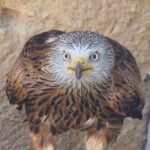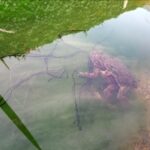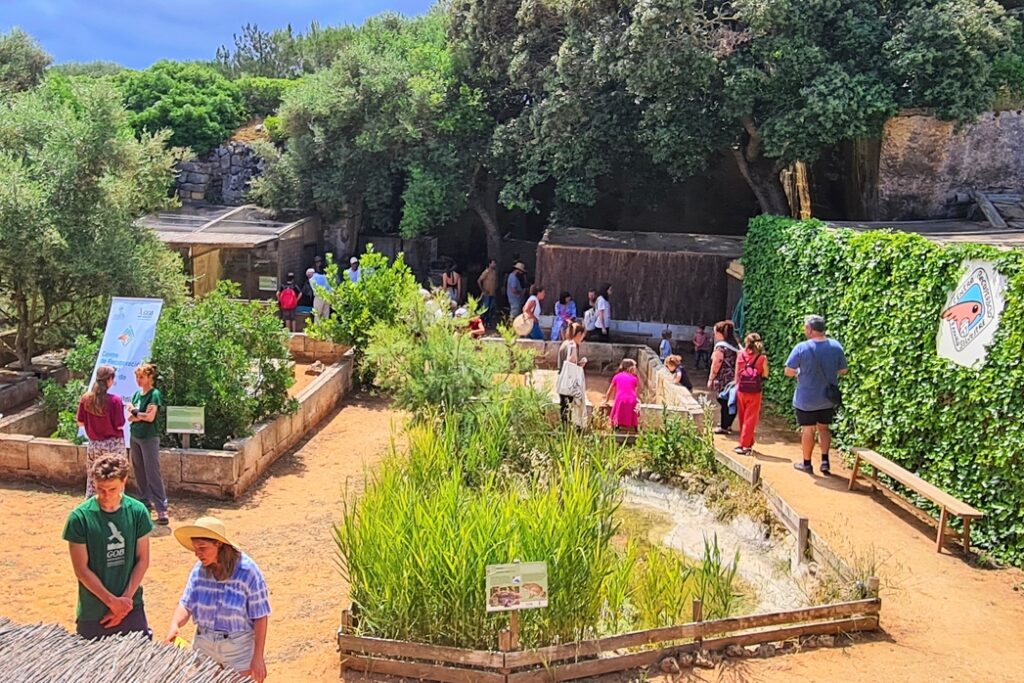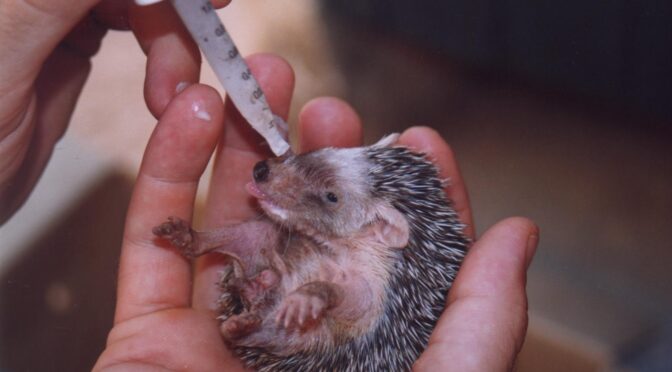Views: 1201
Menorca Preservation and GOB Menorca have signed a three-year collaboration agreement to strengthen the work dedicated to protecting the diversity of wildlife on land and at sea around the island. Much of the support will focus on implementing improvements at the Menorca Wildlife Recovery Centre (CRFSME) of COFIB (managed by the Ministry of Agriculture, Fisheries and Natural Environment) and GOB Menorca, with the aim of enhancing the quality of rescue and care services for wildlife, improving the physical recovery of animals, and ensuring their reintroduction into the natural environment with greater chances of success.
Thanks to this collaboration, it will be possible to improve part of the facilities, such as the flight cages — spaces where birds exercise their wings before being returned to the wild — or to acquire new care units for species that require closer monitoring during their treatment and that will also be equipped with heating systems. New enclosures for seabird species will also be constructed.
A total of 1,291 animals were attended at the CRFSME in 2024, of which 1,220 belonged to wild species and 71 to non-native species.
 In 2024, the CRFSME handled a total of 1,220 admissions of wild animals, among which 53% were birds, 37% reptiles, and 10% mammals. Notably, a large bird of prey species that was mostly admitted due to electrocution from power lines: 2 individuals of red kite (Milvus milvus), a resident species in the Balearic Islands and listed as EN – Endangered – in the Spanish Catalogue of Threatened Species.
In 2024, the CRFSME handled a total of 1,220 admissions of wild animals, among which 53% were birds, 37% reptiles, and 10% mammals. Notably, a large bird of prey species that was mostly admitted due to electrocution from power lines: 2 individuals of red kite (Milvus milvus), a resident species in the Balearic Islands and listed as EN – Endangered – in the Spanish Catalogue of Threatened Species.
Toad rescue operations in three very different environments on the island during 2024
 A total of three interventions were carried out during the breeding season of the Balearic green toad (Bufotes balearicus): one in swimming pools of hotel complexes in Punta Prima before chlorine was added, another involving the removal of the common duckweed (Lemna minor) in a pond specifically built to support the reproduction of this species, and the last one, the rescue of tadpoles from a natural pond in the north of the island that risked drying out before metamorphosis could be completed.
A total of three interventions were carried out during the breeding season of the Balearic green toad (Bufotes balearicus): one in swimming pools of hotel complexes in Punta Prima before chlorine was added, another involving the removal of the common duckweed (Lemna minor) in a pond specifically built to support the reproduction of this species, and the last one, the rescue of tadpoles from a natural pond in the north of the island that risked drying out before metamorphosis could be completed.
These amphibians are only found in Mallorca, Menorca, Ibiza, Corsica, Sardinia, and the Italian Peninsula. In the Balearic Islands, their population is in strong decline due to the loss and degradation of their reproductive habitats, forcing them to use swimming pools and disused ponds during winter.
Environmental Education at the CRFSME: key to expanding knowledge and respect for nature and wildlife
One of the pillars of the CRFSME’s work is Environmental Education, with the aim of increasing awareness about the main issues affecting Menorca’s wildlife and providing the public with the resources to actively participate in its protection. In 2024, the CRFSME welcomed students from up to nine educational centres in Menorca. Guided by the Centre’s technical team, they learned interesting facts about the animals admitted, about the native fauna of the island, and about the main threats related to human activity that they face.
The Wildlife Recovery Centre aims to contribute to the conservation of Menorca’s biodiversity by assisting injured or endangered wild animals, while also playing an educational and awareness-raising role. The Centre operates under an agreement with the Balearic Islands Wildlife Recovery Consortium (COFIB), which depends on the Balearic Government’s Department of the Environment. It also receives support from the Island Council of Menorca and the municipalities of Ciutadella, Maó, Es Mercadal, Ferreries, and Es Castell. The Lithica Foundation actively collaborates by providing the premises, and veterinary services are provided by Jaume Pons’ veterinary clinic.
More information:
- Menorca Preservation: https://menorcapreservation.org/grants/gob-menorca-menorcan-wildlife-recovery-centre/
- GOB Menorca: https://www.gobmenorca.com/recuperacio-de-fauna/


